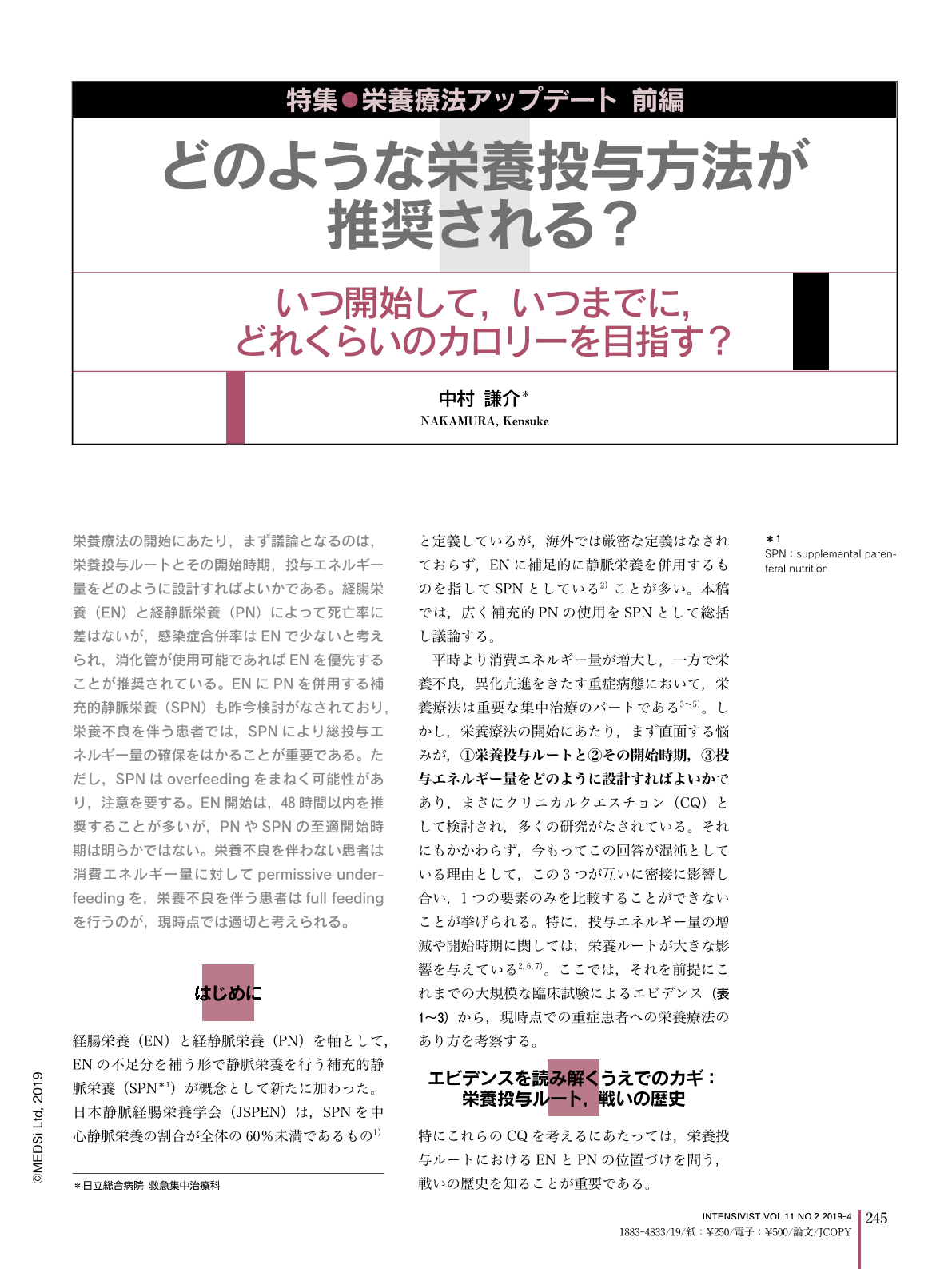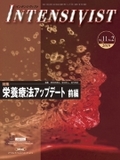Japanese
English
- 有料閲覧
- Abstract 文献概要
- 1ページ目 Look Inside
- 参考文献 Reference
栄養療法の開始にあたり,まず議論となるのは,栄養投与ルートとその開始時期,投与エネルギー量をどのように設計すればよいかである。経腸栄養(EN)と経静脈栄養(PN)によって死亡率に差はないが,感染症合併率はENで少ないと考えられ,消化管が使用可能であればENを優先することが推奨されている。ENにPNを併用する補充的静脈栄養(SPN)も昨今検討がなされており,栄養不良を伴う患者では,SPNにより総投与エネルギー量の確保をはかることが重要である。ただし,SPNはoverfeedingをまねく可能性があり,注意を要する。EN開始は,48時間以内を推奨することが多いが,PNやSPNの至適開始時期は明らかではない。栄養不良を伴わない患者は消費エネルギー量に対してpermissive underfeedingを,栄養不良を伴う患者はfull feedingを行うのが,現時点では適切と考えられる。
To start nutrition therapy for critically ill patients, the first decisions are the route, when and how much should be given. Although mortality may be similar, the rate of infectious complications is less with enteral nutrition (EN) than parenteral nutrition (PN). EN is recommended if the enteral route can be used. Supplemental PN (SPN) which is given with EN has been studied recently. While SPN is important to achieve the total amount of energy needed for malnourished patients, SPN includes the risk of overfeeding. EN is often recommended within 48 hours, however, it is unclear when to start PN or SPN. Permissive underfeeding, less than the energy expenditure, is preferred for patients without nutritional risks, whereas active feeding to achieve full feedings is needed for malnourished patients.

Copyright © 2019, MEDICAL SCIENCES INTERNATIONAL, LTD. All rights reserved.


